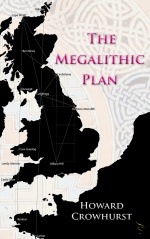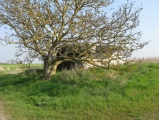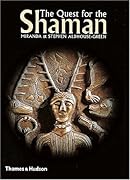<< Our Photo Pages >> Mellor Moor - Cairn in England in Greater Manchester
Submitted by astronomer on Wednesday, 18 July 2012 Page Views: 16516
Neolithic and Bronze AgeSite Name: Mellor Moor Alternative Name: Shaw CairnCountry: England County: Greater Manchester Type: Cairn
Nearest Town: Marple Nearest Village: Mellor
Map Ref: SJ9867187246 Landranger Map Number: 109
Latitude: 53.382060N Longitude: 2.021444W
Condition:
| 5 | Perfect |
| 4 | Almost Perfect |
| 3 | Reasonable but with some damage |
| 2 | Ruined but still recognisable as an ancient site |
| 1 | Pretty much destroyed, possibly visible as crop marks |
| 0 | No data. |
| -1 | Completely destroyed |
| 5 | Superb |
| 4 | Good |
| 3 | Ordinary |
| 2 | Not Good |
| 1 | Awful |
| 0 | No data. |
| 5 | Can be driven to, probably with disabled access |
| 4 | Short walk on a footpath |
| 3 | Requiring a bit more of a walk |
| 2 | A long walk |
| 1 | In the middle of nowhere, a nightmare to find |
| 0 | No data. |
| 5 | co-ordinates taken by GPS or official recorded co-ordinates |
| 4 | co-ordinates scaled from a detailed map |
| 3 | co-ordinates scaled from a bad map |
| 2 | co-ordinates of the nearest village |
| 1 | co-ordinates of the nearest town |
| 0 | no data |
Internal Links:
External Links:

In 1975, John Bu'Lock identified what he thought was a possible cairn on Mellor Moor above Cobden Edge, which is the highest point in Stockport, the trig point on Mellor Moor being at 328 meters (1076 feet). This area was once a plantation, but is now a wildlife preserve above the pastures of a working dairy farm. For the next several years, Ruth Collier, Kath Lowe and John Clarke excavated the site with help from students of Marple Hall School.
They uncovered parts of a funerary cairn built around 4000 years ago, with more than a dozen cremation burials, some within stone cists, which were given names like Willie, Pericles, Cecil and Hector. Those associated with burials were consistent with the building of the cairn in the Late Neolithic or Early Bronze Age but the finds included around 500 flints, many dating from the Early Mesolithic Period indicating that the Cairn was built on the site of much earlier activity. Unfortunately recording of the excavation was not to modern archaeological standards and the finds were never sent for analysis by experts in the appropriate fields. Afine example of a plano convex knife was amongst the finds along with an almost complete ceramic food vessel which has now been conserved and reconstructed.
Later Investigation - 2000
The archive came to the Greater Manchester Archaeology Unit where a Bradford University student on placement, Victoria Mellor, produced a report. As part of the Mellor Heritage Project, the Trust set itself the task of recording the nature of the cairn more thoroughly and establishing the extent of the earlier excavations, examining the cairn's immediate unexcavated and attempting to understand the setting and nature of the prehistoric activity. Read the Report on the Shaw Cairn investigations 1976-1988 (PDF file) and other previous work here.
2007
It was decided to send up a team to clear the heather in the spring and assess the area. Timing any investigation is difficult on the moor as it must be carried out when the weather is not too harsh on the exposed hilltop, the birds are not nesting or the undergrowth of heather at its height. It soon became clear however that the old excavations had not been back-filled and the team were able to clear the ground sufficiently to carry out further Geophysical Investigation.
2008 and 2009
An evaluation excavation was then carried out in June 2008 which proved tremendously exciting. It confirmed the presence of a flat Ring Barrow covered in stone, with a kerb of large stones, surrounding piles of smaller stones and a stone lined grave known as a cist. Unfortunately most of the cist was found to have been damaged by previous digging so only a fraction remained of the original deposit with no trace of the burial itself.
However, a tremendous amount of new information could still be gained from the site along with some remarkable finds. Spectacular photographs were taken from an arial camera give a wonderful birds eye view of the Cairn from above.
The Cairn was found to consist of both an inner and outer kerb with radials, which possibly suggest phasing. The size of the cist indicates that the burial was an inhumation and and within this disturbed fill was found a further fine plano-convex knife along with the more remarkable discovery of a number of rare and beautiful amber beads from a necklace. In the base of the cleaned out cist can even be seen the marks of staining from the body.
Read more at Mellor Archaeological Trust and Pastscape Monument No. 890910.
Note: Visit Shaw Cairn on Mellor Moor, Sat 21-Sun 22 July
You may be viewing yesterday's version of this page. To see the most up to date information please register for a free account.






Do not use the above information on other web sites or publications without permission of the contributor.
Click here to see more info for this site
Nearby sites
Key: Red: member's photo, Blue: 3rd party photo, Yellow: other image, Green: no photo - please go there and take one, Grey: site destroyed
Download sites to:
KML (Google Earth)
GPX (GPS waypoints)
CSV (Garmin/Navman)
CSV (Excel)
To unlock full downloads you need to sign up as a Contributory Member. Otherwise downloads are limited to 50 sites.
Turn off the page maps and other distractions
Nearby sites listing. In the following links * = Image available
1.7km NNW 344° Mellor Hillfort* Hillfort (SJ982889)
3.0km NE 39° Ringstones (Derbyshire)* Stone Circle (SK006896)
3.1km SSW 205° St Mary (Disley)* Ancient Cross (SJ97388444)
3.7km N 2° Brown Low* Round Barrow(s) (SJ988909)
3.8km NE 35° Ringstones (new circle at Near Slack Farm)* Modern Stone Circle etc (SK0087290394)
4.1km N 4° Ludworth Intake* Round Barrow(s) (SJ98989131)
4.2km NNE 28° Robin Hood's Picking Rods* Ancient Cross (SK0060990941)
4.2km NNE 29° Chisworth Cupmarked stone* Rock Art (SK007909)
5.3km E 95° Watery Hey Well* Holy Well or Sacred Spring (SK0399986733)
5.4km SSW 204° Lyme Park* Ancient Cross (SJ96458235)
5.4km SSE 166° Ringstone (Whaley Bridge) Stone Circle (SK000820)
5.6km WNW 303° St Chad's Well (Chadkirk)* Holy Well or Sacred Spring (SJ93979027)
5.6km S 171° The Dipping Stone* Ancient Cross (SJ99558171)
5.7km E 96° Whitworth Well* Holy Well or Sacred Spring (SK0437786691)
5.7km NE 36° Coombes Edge* Ring Cairn (SK0204591892)
5.9km SSE 169° Hawkhurst Head* Standing Stone (Menhir) (SJ99838149)
5.9km NNW 343° Werneth Low Cairn Cairn (SJ969929)
6.0km SSW 201° Knightslow Wood E Round Barrow(s) (SJ965817)
6.0km SSW 201° Knightslow Wood W* Round Barrow(s) (SJ965817)
6.0km SSW 204° Knights Low NW Round Barrow(s) (SJ962818)
6.0km SSW 202° Knightslow Wood* Round Barrow(s) (SJ964817)
6.0km SE 127° Chinley Churn Barrow Round Barrow(s) (SK035836)
6.0km SSW 201° Knights Low W Round Barrow(s) (SJ965816)
6.1km SSW 192° Bowstones* Ancient Cross (SJ9739181309)
6.1km SSW 202° Knights Low E* Round Barrow(s) (SJ964816)
View more nearby sites and additional images






 We would like to know more about this location. Please feel free to add a brief description and any relevant information in your own language.
We would like to know more about this location. Please feel free to add a brief description and any relevant information in your own language. Wir möchten mehr über diese Stätte erfahren. Bitte zögern Sie nicht, eine kurze Beschreibung und relevante Informationen in Deutsch hinzuzufügen.
Wir möchten mehr über diese Stätte erfahren. Bitte zögern Sie nicht, eine kurze Beschreibung und relevante Informationen in Deutsch hinzuzufügen. Nous aimerions en savoir encore un peu sur les lieux. S'il vous plaît n'hesitez pas à ajouter une courte description et tous les renseignements pertinents dans votre propre langue.
Nous aimerions en savoir encore un peu sur les lieux. S'il vous plaît n'hesitez pas à ajouter une courte description et tous les renseignements pertinents dans votre propre langue. Quisieramos informarnos un poco más de las lugares. No dude en añadir una breve descripción y otros datos relevantes en su propio idioma.
Quisieramos informarnos un poco más de las lugares. No dude en añadir una breve descripción y otros datos relevantes en su propio idioma.